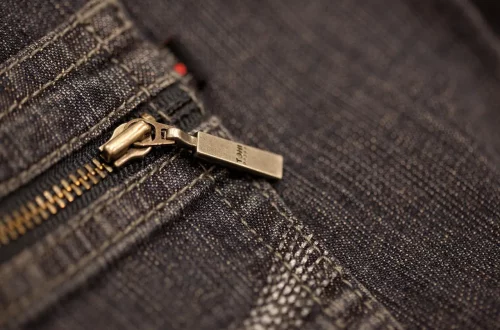
Essential Ski Wax Kit: How to Choose the Right One for Your Needs
Skiing is one of the most exhilarating outdoor activities, offering a unique blend of adventure and tranquility. Whether you’re carving down a pristine snow-covered slope or enjoying the breathtaking views from a mountaintop, the thrill of skiing is unmatched. However, to truly enhance your skiing experience, proper equipment maintenance is essential, and one of the most critical aspects of this maintenance is the application of ski wax. The right wax not only improves your skis’ performance but also prolongs their lifespan. In this article, we delve into the essential elements of ski wax kits and how to choose the ideal one tailored to your skiing needs. Understanding the types of waxes available, the tools needed for application, and the specific conditions in which you will be skiing are all vital factors that contribute to optimal performance on the slopes. By arming yourself with the right knowledge and tools, you can ensure that your skiing experience is as smooth and enjoyable as possible.
Types of Ski Wax and Their Functions
Choosing the right ski wax begins with understanding the different types available on the market. Ski wax can generally be categorized into three main types: glide wax, grip wax, and structure wax. Glide wax is primarily used on downhill skis and snowboards to reduce friction and increase speed. It is essential for those who spend a significant amount of time racing or carving down the mountains. Glide wax comes in various formulations, including fluorinated and non-fluorinated options. Fluorinated waxes offer superior water repellency and are often used in competitive skiing, while non-fluorinated versions are more environmentally friendly and suitable for recreational skiing.
Grip wax, on the other hand, is predominantly used for cross-country skiing. This type of wax is designed to provide traction while allowing for smooth gliding. It is usually applied to the middle section of the ski, where the skier’s weight is concentrated. Grip waxes can be further divided into hard and soft waxes, depending on the snow conditions. The right choice between these two will depend on factors such as temperature and humidity at the time of skiing.
Structure wax is less commonly discussed but equally important. This type of wax helps create a microscopic structure on the base of the ski, which can improve glide in various snow conditions. When the base is properly structured, it can enhance the ski’s performance by allowing for better water drainage and aerodynamics.
Ultimately, understanding these types of wax and their specific functions will help you make an informed decision when choosing a ski wax kit. Whether you prioritize speed, traction, or overall performance, there is a wax specifically designed to meet your skiing needs.
Essential Tools for Ski Waxing
To achieve the best results when waxing your skis, having the right tools is just as important as the wax itself. A well-rounded ski waxing kit typically includes several essential items: an iron, a scraper, a brush, and a waxing cork. Each of these tools plays a crucial role in ensuring that the wax adheres properly to the ski base and performs optimally on the snow.
The waxing iron is perhaps the most critical tool in your kit. It is specifically designed to heat the wax to its optimal melting point without damaging the ski base. Regular household irons can get too hot and may cause irreversible damage to your skis. A dedicated ski waxing iron allows for precise temperature control, making it easier to apply the wax evenly.
Once the wax is melted onto the ski base, a scraper is used to remove any excess wax. A plastic scraper is ideal for this task, as it won’t scratch the base. The goal is to leave a thin, even layer of wax that will enhance glide without being too thick, which can impede performance.
After scraping, a brush is used to polish the base and remove any remaining wax particles. Brushes come in various materials, such as nylon or brass, and selecting the right one depends on the type of wax used. Using a brush not only cleans the base but also helps structure the ski, enhancing its performance on the snow.
Lastly, a waxing cork can be useful for applying a layer of hard wax for grip or for polishing up the glide wax. It helps to press the wax into the base, ensuring that it adheres well. Having these essential tools in your ski wax kit will make the waxing process more efficient and effective.
Factors to Consider When Choosing a Ski Wax Kit
When shopping for a ski wax kit, several factors should guide your decision-making process. First, consider the frequency of your skiing. If you’re an occasional skier, a basic kit with a few essential wax types may suffice. However, if you ski regularly or participate in competitive events, investing in a more comprehensive kit with advanced wax options will pay off in the long run.
Next, take into account the types of skiing you plan to do. As mentioned earlier, glide and grip waxes serve different purposes. If you primarily ski downhill, focus on glide waxes. Conversely, if you’re into cross-country skiing, ensure your kit includes grip wax options. Additionally, the climate and snow conditions where you typically ski should influence your choice of wax. Different waxes perform better in various temperatures and snow types, so having a range of options can be beneficial.
Another critical aspect to consider is the quality of the tools included in the kit. Not all ski wax kits are created equal, and the quality of the tools can significantly impact your waxing experience. Look for kits that offer durable, high-quality scrapers and brushes, as these tools will stand the test of time and yield better results.
Lastly, check for user reviews and recommendations. Online forums and ski shops can be invaluable resources for gauging the effectiveness of different wax kits. Seeking advice from seasoned skiers can help you identify the best options based on their experiences, leading you to make a more informed choice.
Maintenance Tips for Your Ski Wax Kit
Once you’ve chosen the right ski wax kit, proper maintenance is essential to ensure longevity and performance. The first step involves storing your wax and tools in a cool, dry place. Heat and moisture can degrade the quality of the wax and tools over time. Keeping them organized in a dedicated storage box can prevent damage and make it easier to find what you need when it’s time to wax.
Regularly check the condition of your tools. Scrapers can become dull with use, and brushes may accumulate wax residue. Cleaning brushes with warm, soapy water and replacing them when they wear out will help maintain their effectiveness. Additionally, ensure that your waxing iron remains clean and free from excess wax buildup, as this can affect its performance.
It’s also advisable to reapply wax regularly, depending on your skiing frequency and conditions. For those who ski frequently or on varied terrain, a good rule of thumb is to wax your skis every three to five outings. Observing the base of your skis for signs of dryness or discoloration can help determine when it’s time for a fresh application.
Finally, don’t forget to familiarize yourself with the specific waxes and tools in your kit. Understanding their unique properties and how to utilize them effectively will enhance your overall skiing experience. By taking care of your ski wax kit, you ensure that it remains ready to help you glide effortlessly down the slopes.
In conclusion, selecting the right ski wax kit is vital for optimizing your skiing experience. Understanding the different types of wax, having the essential tools, considering your skiing habits, and maintaining your kit will help you make the most informed decisions. Whether you’re a casual skier or a dedicated enthusiast, proper waxing can significantly enhance your performance on the slopes.
**Disclaimer:** This article is for informational purposes only and does not constitute medical advice. Always consult with a qualified healthcare provider for any health-related concerns or questions.




